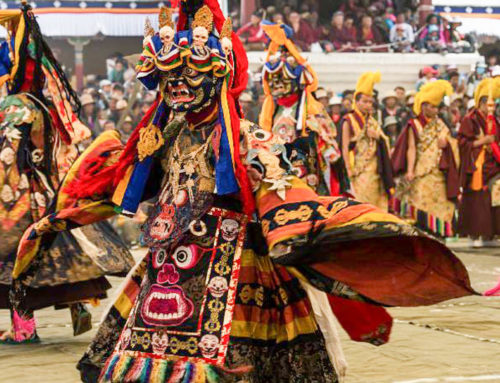Tibetan Buddhism is a profound spiritual tradition that encompasses a rich tapestry of teachings and practices. With its roots in the ancient Indian teachings of Buddhism, Tibetan Buddhism has evolved into a unique and vibrant tradition that has captivated the hearts and minds of people around the world. In this article, we will explore some of the key teachings and practices in Tibetan Buddhism, shedding light on the wisdom and transformative power they offer to practitioners.
Introduction to Tibetan Buddhism
Tibetan Buddhism, also known as Vajrayana Buddhism, emerged in Tibet during the 7th century CE. It draws upon the essential teachings of the historical Buddha, Siddhartha Gautama, and combines them with indigenous Tibetan spiritual practices. Tibetan Buddhism places great emphasis on the spiritual development of individuals, aiming to guide them towards the ultimate goal of enlightenment.
The Four Noble Truths
At the core of Tibetan Buddhism are the Four Noble Truths, which serve as the foundational teachings of the tradition. The First Noble Truth is the acknowledgment of suffering, recognizing that suffering is an inherent part of human existence. The Second Noble Truth teaches that suffering arises from attachment and desire. The Third Noble Truth reveals that suffering can be transcended by eliminating attachment and desire. Finally, the Fourth Noble Truth presents the Eightfold Path as the means to alleviate suffering and achieve enlightenment.
The Eightfold Path
The Eightfold Path provides a comprehensive guide for ethical conduct, mental development, and wisdom. It consists of eight interrelated factors: Right View, Right Intention, Right Speech, Right Action, Right Livelihood, Right Effort, Right Mindfulness, and Right Concentration. Practitioners of Tibetan Buddhism strive to integrate these principles into their daily lives, cultivating virtues and purifying their minds.
Meditation Techniques
Meditation holds a central position in Tibetan Buddhism as a means to calm the mind, develop concentration, and gain insight into the nature of reality. Various meditation techniques are employed, including shamatha (calm-abiding meditation), vipassana (insight meditation), and tonglen (compassion meditation). Through regular meditation practice, individuals can cultivate mindfulness, compassion, and wisdom.
Bodhisattva Path
The Bodhisattva Path is an important aspect of Tibetan Buddhism. A Bodhisattva is an individual who aspires to attain enlightenment for the benefit of all beings. They commit themselves to helping others and embodying compassion in every aspect of their lives. The Bodhisattva ideal emphasizes the cultivation of virtues such as loving-kindness, compassion, and wisdom, as well as engaging in altruistic actions.
Tantra and Vajrayana Buddhism
Tibetan Buddhism is often associated with Tantra and Vajrayana Buddhism. Tantra is a spiritual path that utilizes various methods, including rituals, visualizations, and energy practices, to accelerate the path to enlightenment. Vajrayana Buddhism, often referred to as the Diamond Vehicle, is an esoteric form of Buddhism that incorporates Tantric practices. It is known for its profound symbolism, intricate rituals, and use of mantra and mandalas.
Rituals and Ceremonies
Rituals and ceremonies play a significant role in Tibetan Buddhism, serving as a means to connect with the sacred, express devotion, and accumulate merit. These rituals often involve chanting, offerings, visualizations, and sacred dances. They create a sacred space and invoke the blessings of enlightened beings, providing practitioners with a profound spiritual experience.
Prayer and Mantra Recitation
Prayer and mantra recitation are integral practices in Tibetan Buddhism. Prayers express devotion, aspiration, and gratitude towards the enlightened beings. Mantras are sacred syllables or phrases that are recited repetitively, harnessing their spiritual power. The recitation of mantras is believed to purify the mind, transform negative energies, and invoke blessings.
Conclusion
The teachings and practices in Tibetan Buddhism offer a transformative path for individuals seeking spiritual growth and enlightenment. Through the Four Noble Truths, the Eightfold Path, meditation techniques, the Bodhisattva Path, Tantra and Vajrayana Buddhism, rituals, and prayer, practitioners are guided on a profound journey of self-discovery, compassion, and wisdom. The richness of Tibetan Buddhism lies not only in its teachings but also in its ability to awaken the innate potential within each individual.
FAQs
What are some common meditation techniques in Tibetan Buddhism?
Shamatha (calm-abiding meditation), Vipassana (insight meditation), and Tonglen (compassion meditation) are commonly practiced in Tibetan Buddhism.
Can anyone practice Tibetan Buddhism, or is it reserved for Tibetans?
Tibetan Buddhism is open to anyone who is interested in its teachings and practices. It is not limited to Tibetans and welcomes practitioners from diverse backgrounds.
How do rituals and ceremonies contribute to spiritual growth in Tibetan Buddhism?
Rituals and ceremonies provide a means for practitioners to connect with the sacred, express devotion, and accumulate merit. They create a conducive environment for spiritual growth and foster a deep sense of connection with the divine.
Is tantra practiced by all Tibetan Buddhists?
Tantra is a specialized form of practice within Tibetan Buddhism and is not practiced by all Tibetan Buddhists. It requires proper guidance and understanding of its esoteric nature.
What is the significance of mantra recitation in Tibetan Buddhism?
Mantra recitation is considered a powerful practice in Tibetan Buddhism. It purifies the mind, protects from negative influences, and invokes the blessings of enlightened beings. Mantras are believed to carry the essence of spiritual wisdom and are recited for various purposes, including healing, transformation, and spiritual progress.
About Tibet Travel & Tours
Tibet Travel & Tours is a local travel agency in Tibet that offers unique and authentic experiences to travelers from all around the world. As a leading tour operator in Tibet, we provide high-quality Tibet Travel services that are tailored to our clients’ needs and preferences.
Our team of experienced and knowledgeable professionals strives to ensure that our clients have a hassle-free and memorable trip in Tibet. We specialize in various types of tours, including cultural tours, trekking and hiking tours, and adventure tours.
Our commitment to providing exceptional service has earned us a reputation as one of the best local travel agencies in Tibet. Contact us today to plan your unforgettable trip to Tibet.
Explore Tibet with a local Tibetan Travel Agency
If you’re looking to explore Tibet, starting your journey with a reputable Tibetan travel agency in Tibet is crucial. Tibet Travel & Tours is a great choice to begin your adventure with their extensive knowledge of the region and commitment to responsible tourism.
Their Tibet tour packages cater to a range of interests and budgets, making it easy to plan a trip that suits your needs. Before embarking on your tibet tour, it’s essential to have the right Tibet travel information and necessary documents, including a Tibet travel permit.
The Tibet Travel Planner provided by i-Tibet travel is an excellent resource to plan your trip, including tips on what to pack, where to stay, and what to see.
For beginners, the “About Tibet” guide provided by i-Tibet travel offers a comprehensive overview of the region’s history, culture, and top attractions. So, start your Tibet travel plan here with i-Tibet travel and discover the magic of Tibet for yourself.









